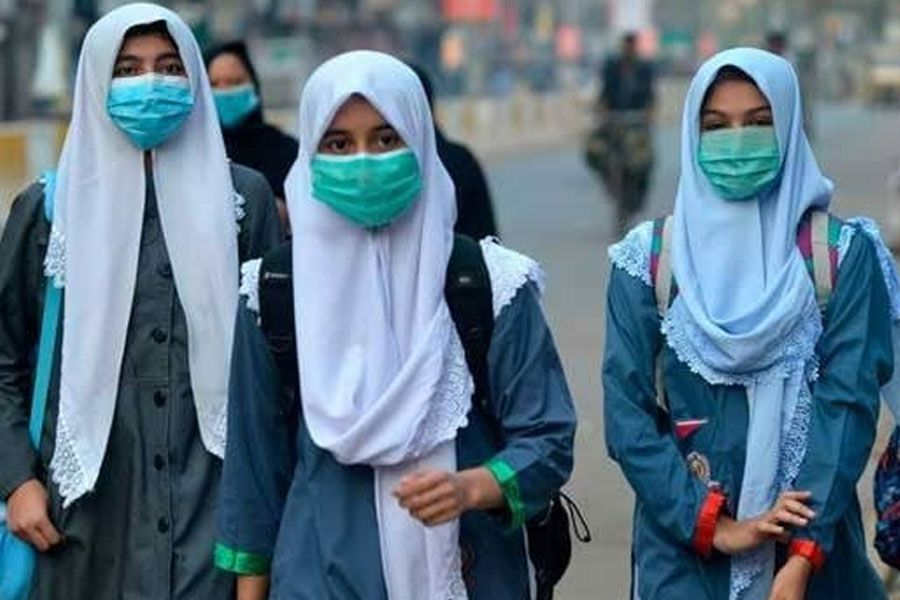The Azad Jammu and Kashmir’s Educational Department ( AJK Education Department )has made hijab mandatory for all female students and teaching staff members in co-education institutes.
A circular was taken out to announce this decision on 24th February and was signed by many prominent figures including the deputy director of AJK’s Directorate General of Elementary and Secondary Education (Males).
The circular read:
it has been observed that female students/teachers are not made to wear hijabs in institutions where co-education is practised. Therefore, under the passed-on instructions, female students/teachers should be strictly bound to wear hijabs.
Lahore Grammar Student Brutally Tortured by 102 Gang Members
Moreover, the circular also warned about the consequences if the rules were broken, instructing that disciplinary proceedings shall be initiated “against the heads of the institutions concerned”.
AJK Education Department shared the circular with all 3 divisional directors and all 10 district education officers on the male side for endorsement as per rules, who then forwarded the same to the educational institutions in their jurisdiction between March 2 and March 4.
AJK Education Department & Their Take
Deevan Ali Khan Chughtai, the AJK minister for elementary and secondary education, confirmed the circular and elaborated on the reasons behind it.
“We have done it exactly in observance of the injunctions of God and His Messenger (peace be upon him) […] The women have been ordained to wear veils and men have been ordained to lower their gaze,” he added that since the government was unable to establish separate schools for girls, due to resource constraints, they had to be enrolled in co-education schools.
“However, following some complaints by parents, we decided to enforce a dress code for teachers and hijab for female students and teachers,” he added.
Chughtai said initially, the teachers across the state would wear gowns for their identification and in the second stage, they would also have to wear uniforms.
“As far as female students and female teachers in co-ed institutions are concerned, the hijab has been made part of their uniform,” the AJK minister said. “Ideally hijab should also be enforced in universities” but since the students in varsities are “mature enough as compared to the adolescent high schoolers”, it had been enforced in high schools and higher secondary schools.
“It’s not a forced decision. Rather we have taken it in consultation with parents and teachers. Everyone has accepted it because our society has a visible leaning towards religion,” Chughtai concluded.
Sindh Bans Glass-Bottled Soft Drinks in Schools After Student’s Death
Hijab & Education
The hijab, a headscarf worn by some Muslim women as a sign of modesty and religious observance, has been a subject of debate and controversy in co-educated institutes in several countries.
The reasons why the hijab has been an important part of co-educated institutes can vary, but here are some possible explanations:
- Religious freedom and expression: In many countries, including those with co-educated institutes, individuals have the right to practice their religion freely and express their religious beliefs. For Muslim women who choose to wear the hijab, it is a way for them to express their religious beliefs and to adhere to their faith.
- Cultural identity: The hijab is not only a religious symbol but also a cultural one. For some Muslim women, wearing the hijab is a way to affirm their cultural identity and show pride in their heritage.
- Empowerment: Contrary to popular belief, many Muslim women choose to wear the hijab as an act of empowerment rather than oppression. It can be a way for them to take control of their bodies and to reject the Western beauty standards that often objectify women.
- Gender equality: In co-educated institutes, wearing the hijab can help Muslim women feel more equal to men. Without it, they may feel exposed and vulnerable to the male gaze. Wearing the hijab can help level the playing field and allow women to focus on their studies rather than their appearance.
- Inclusivity: Finally, allowing Muslim women to wear the hijab in co-educated institutes can promote inclusivity and diversity. It sends a message that all students, regardless of their religious or cultural background, are welcome and valued.
What are your thoughts on this? Share them with us in the comments below.
Stay tuned to WOW360.
